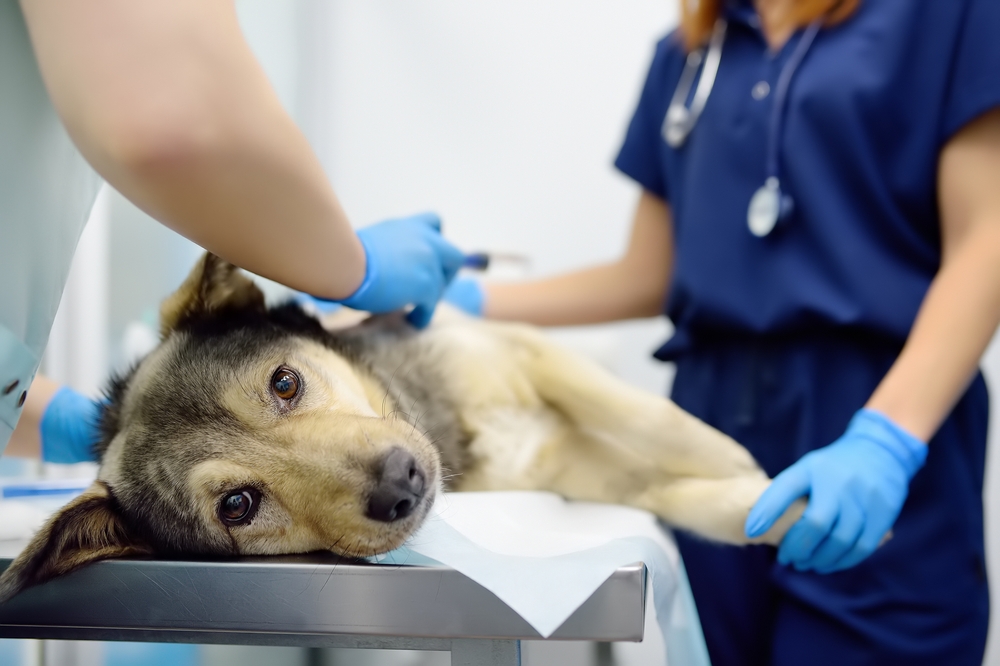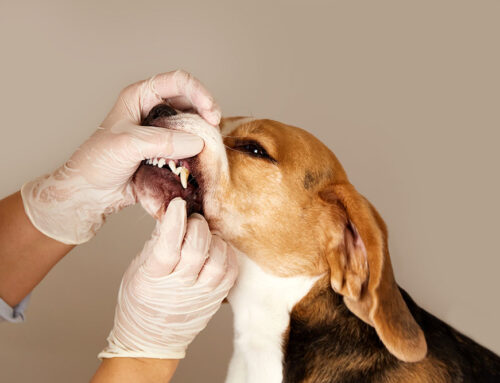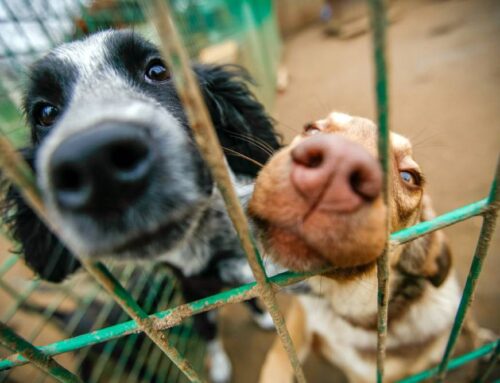Pet Cancer Awareness Month: Early Detection Saves Lives
November is Pet Cancer Awareness Month, a time to educate and take action for the animals you love. Lumps, lethargy, or unexplained weight loss can all be early warning signs. Regular screenings and prompt care give pets their best chance for successful treatment and recovery.
At Town & Country Animal Hospital, our AAHA-accredited team in Athens, AL pairs advanced diagnostic technology with compassionate expertise to provide thoughtful cancer screening, diagnosis, and treatment planning. We believe in empowering you with clear information so you leave every visit confident in your next steps. When you notice something concerning, our approach supports the unique bond you share with your pet and keeps you at the center of every decision.
What Pet Owners Should Know About Cancer
Cancer is abnormal, uncontrolled cell growth that can occur in nearly any body system. Because pets are living longer with modern care, cancer diagnoses are more common than in years past. The good news is that today’s tools have transformed many cancers from an automatic death sentence into a manageable condition.
Early detection is the single most important factor in successful outcomes. Regular wellness exams help us spot subtle changes before they progress, and your observations at home often provide the first clues. Knowing what to watch for and acting quickly can make all the difference. Waiting to see if it might get better could mean the difference between cancer spread and cure, or a minor surgery vs. major reconstruction or even limb amputation.
Recognizing Different Forms of Cancer in Dogs and Cats
Cancer takes many forms, from benign growths to aggressive tumors. Understanding common types helps you ask focused questions during veterinary visits.
Lipomas: Common Fatty Tumors
Lipomas in dogs are soft, movable lumps of fat that appear most often in middle-aged or senior dogs. They are usually harmless but should be examined to confirm the diagnosis. If a lipoma grows large or interferes with movement, removal may be recommended. Because not all soft lumps are lipomas, cytology or biopsy is the safest way to know what you are dealing with.
Mast Cell Tumors: Deceptive Skin Cancers
Mast cell tumors in dogs are common skin cancers that can look like simple bumps. These tumors release histamine and can cause swelling, redness, or ulceration. Appearance cannot distinguish benign from malignant growths, so cytology or biopsy is essential. Treatments range from surgical removal to chemotherapy, depending on grade and location.
Mammary Tumors: The Spaying Connection
Mammary tumors occur most often in unspayed females. Early spaying, ideally before the first heat cycle, greatly reduces risk. Canine mammary tumors can be benign or malignant, while feline mammary tumors are malignant in most cases. Routine palpation during exams improves the chance of catching small, treatable lesions.
Lymphoma: Affecting the Lymphatic System
Lymphoma is a cancer of lymphocytes and one of the most common cancers in both dogs and cats. Dogs often present with enlarged lymph nodes under the jaw, in front of the shoulders, or behind the knees. Cats may show vague signs like weight loss or vomiting. Many cases respond well to chemotherapy, and some pets achieve months to years of remission.
Hemangiosarcoma: Silent and Aggressive
Hemangiosarcoma in dogs arises from blood vessel walls, commonly in the spleen or heart. It often grows quietly until it ruptures, causing internal bleeding and collapse. Certain breeds, like Golden Retrievers, have higher risk. Our emergency care team provides immediate stabilization during business hours when sudden bleeding is suspected.
Osteosarcoma: Bone Cancer in Large Breeds
Osteosarcoma in dogs typically affects the long bones of large or giant breeds. Signs include progressive lameness and swelling. Digital radiography helps identify suspicious bone changes, and biopsy confirms the diagnosis. Treatment often includes amputation and chemotherapy, and many dogs adapt well to life on three legs.
Squamous Cell Carcinoma: Skin and Oral Concerns
Squamous cell cancer in cats can affect sun-exposed skin and oral tissues. In dogs, similar tumors may appear on toes, in the mouth, or on the skin. Nonhealing sores or crusty patches deserve prompt evaluation and biopsy.
Cancers of the Mouth
Oral tumors of small animals may cause pain, bad breath, difficulty eating, or bleeding. Early diagnosis guides treatment that maintains comfort and quality of life. Because these are often not noticed until they are severe, regular oral exams are critical to catch them early.
Warning Signs Every Pet Owner Should Recognize
Signs of cancer in pets vary with tumor type and location. Not every symptom indicates cancer, but timely assessment prevents missed opportunities for early care.
Watch for these changes:
- Lumps or bumps that grow, change shape, or feel firm
- Unexplained weight loss despite normal appetite
- Persistent lethargy or decreased activity
- Nonhealing sores, wounds, or swelling
- Difficulty eating, excessive drooling, or bad breath
- Bleeding from the mouth, nose, or other openings
- Labored breathing, chronic coughing, or exercise intolerance
- Vomiting, diarrhea, or changes in bathroom habits
When you notice something concerning, our team provides a thorough evaluation and clear guidance.
How Veterinarians Identify Cancer
Accurate diagnosis combines a complete exam, laboratory testing, and imaging. Our advanced diagnostic capabilities help define cancer type, stage, and options clearly so you can make confident decisions.
Cytology and Fine Needle Aspiration
Obtaining a sample for cytology is minimally invasive and provides rapid information. Cytology in veterinary practice helps distinguish benign from malignant masses and guide next steps, while biopsy takes a larger sample or the entire mass to send to a lab for more in-depth information about the aggressiveness and type of cancer.
Imaging and Staging
Ultrasound diagnostic imaging lets us visualize internal organs and detect tumors that cannot be felt. Chest x-rays help us judge whether the tumor has metastasized, or spread to other organs. Our in-house Ultrasound and digital radiology aid in identifying metastasis and planning treatment.
Treatment Approaches for Pet Cancer
Treatment depends on tumor type, location, stage, overall health, and your goals for your pet. We design individualized plans that balance medical effectiveness with comfort and daily quality of life.
Surgical Intervention
Surgery is often the first step for localized tumors. Complete removal with clear margins, meaning no cancer cells are left at the edges, offers the best chance for cure. We provide tailored anesthesia, diligent monitoring, and attentive pain control for a smooth recovery.
Chemotherapy Protocols
Chemotherapy targets rapidly dividing cancer cells throughout the body. Veterinary protocols are designed to minimize side effects, and most pets tolerate treatment well. If you will give oral medications at home, safe handling is critical. Understanding chemotherapy cost and financing can help you plan.
Radiation Therapy
Radiation can shrink tumors or eliminate residual cancer cells when complete surgery is difficult. We coordinate with specialty radiation facilities to streamline your pet’s care.

Immunotherapy and Emerging Options
Immunotherapy treatment for dogs helps the immune system recognize and attack cancer cells. For select tumors, these therapies may be used alone or with surgery, chemotherapy, or radiation.
Supportive and Palliative Care
Some families choose comfort-focused care, which is a loving and valid path. The Veterinary Cancer Society pet owner resources offer guidance for managing symptoms at home. Our senior pet care team supports pain control, appetite, mobility, and end-of-life decisions with compassion.
The Power of Prevention and Early Screening
Routine exams, annual lab work, and quick lump checks form the backbone of cancer prevention. During wellness visits, we palpate lymph nodes, examine skin and oral tissues, listen to the heart and lungs, and recommend bloodwork to screen for hidden problems. At Town & Country Animal Hospital, we tailor screening to your pet’s age, breed, and risks, and we take time to answer every question so you leave without doubts.
Your Next Steps
Many pets live long, happy lives after a cancer diagnosis thanks to early detection and modern treatment. If you have noticed a lump, behavior change, or any worrisome sign, do not wait. Schedule an exam today. Our AAHA-accredited team is here to provide clear answers, advanced diagnostics, and steady support from the first concern to the final follow-up.







Leave A Comment